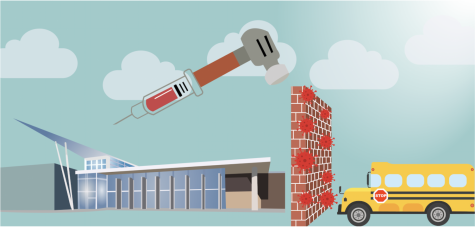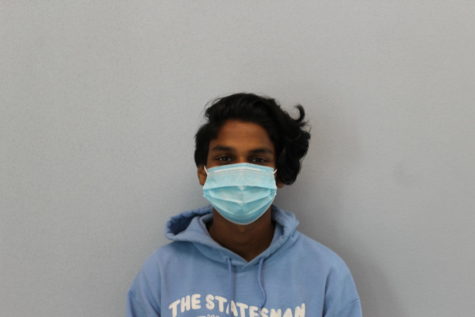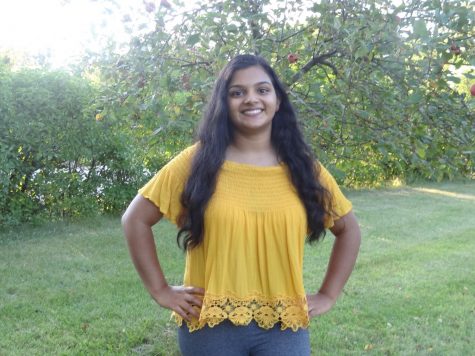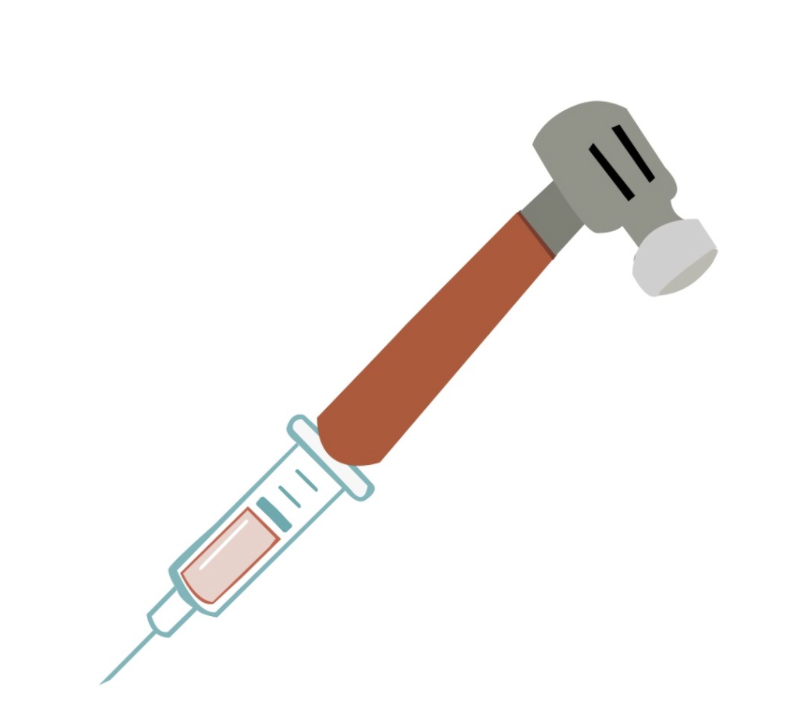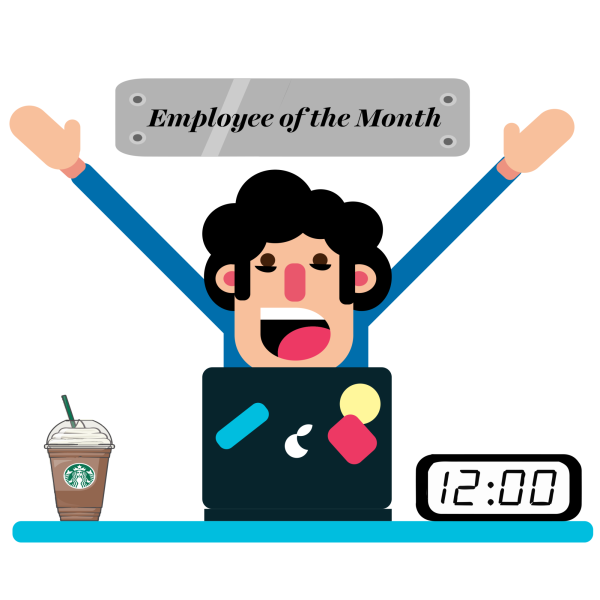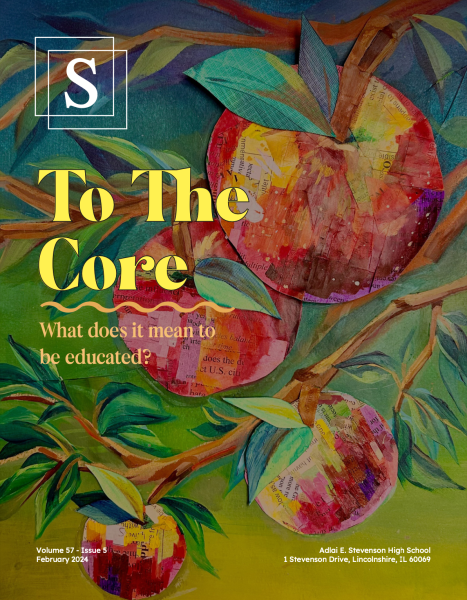Breaking the COVID-19 Barrier – Q&A
Local officials answer questions regarding future education plans during the COVID-19 pandemic
In late July, Stevenson announced their plans to go fully remote for the entirety of the first semester. As a result, many have questions regarding how and when schools can return to their normal daily schedules. For such a return to normal, however, experts agree that it would require widespread access to a COVID-19 vaccine.
Principal Troy Gobble has played a key role in finalizing the operations of the school and offers many insights into Stevenson’s day-to-day activities. Furthermore, Lea Bacci, a member of the Public Health Emergency Operations Committee at the Lake County Health Department, has acted as a liaison between schools, daycares and camps as well as the health department and provides further information in regards to this topic.
Lea Bacci
What conditions need to be met before schools can reopen?
As far as being in school versus being 100% remote, there are metrics for that. Generally, the one metric that we look for statewide is called the positivity rate. If the positivity rate is at or above 8% for 3 consecutive days, in a 7 day period of time, then we have to implement mitigation strategies at that point. We [also] developed more specific metrics for the schools to use, so they could take a look at the zip codes that attend their school and make zip code-level decisions versus looking at just the statewide data. We haven’t had any zip codes get close to that, so for now it’s not a concern.
**Although the interview was conducted earlier, the Lake County Health Department issued a warning about rising cases of COVID-19 among young adults with a positivity rate of 4.9% across the North Suburban Region on September 4th.
How close are we to fully vaccinating the general public?
There are some [vaccines] that are in the final stage, then they have to start giving it out to the general public. So who’s going to get the vaccine first? Elected officials, people that are severely immunocompromised, first responders and all healthcare workers. It will definitely take a lot of time in order to get down to the level where we are vaccinating all high school students so that we can be in school. Do I think there’s a potential for us to get there by next fall? It’s a possibility; I like to be optimistic about it.
**For more information on the search for COVID-19 immunization, please use vaccine trackers such as the one offered by Washington Post.
How long will it take for herd immunity to be in effect? Do reinfection rates affect herd immunity?
Right now [experts] are measuring reinfection of COVID-19, and that’s going to give us an indication of the risk or immunity that someone might have after contracting COVID-19 in the first place. Similar to influenza, just because you had influenza in October doesn’t mean you can’t get it in April. Preliminary research suggests that there is about a 3 month immunity to [COVID-19], but that is about as far as it’s gotten. Herd immunity would be long term — let’s say 4 years worth of immunity from the virus. If people are getting reinfected, what they know is that we aren’t building any immunity to it, so you would have to get a vaccine pretty much every year, just like influenza.
What kind of safety procedures will continue after the pandemic?
I do think that this will change the way that we congregate. [If this is similar to influenza], those who are more at risk are going to have to be careful just like they are during flu season. For example, you may see people wearing masks for an extended number of years as we move forward. The way that we work as a society will definitely change, I think. Will they do construction in schools to make it easier for them to spread students out? Find new and different ways of learning, like changing the schedule? I think there could be some of those changes.
Is Illinois still at risk of a potential ‘second wave’ of coronavirus?
It will be very telling in October. We’ve exposed ourselves to a lot of different people in the last couple of months, so we were seeing cases go up a little bit, but we weren’t seeing the peak that we saw before. While people are able to go outside, eat outside, etc., I think it will be relatively stable for now. We may see a decrease only because people won’t be outside [and] congregating as much. Then again, we could see an increase because people will be hanging out more inside others’ homes versus outside. It’ll be very interesting to see what path [the virus] takes.
Troy Gobble
What kind of activities are currently taking place at Stevenson?
We actually have a fair number of things happening in a safe way on campus. We are in week 3 of [some fall] sports and are symptom and virus free in all those spaces. Because we were able to run some of that work, about three weeks from now we are going to begin what we call winter camps. For instance, the football team is going to come, and they’re going to just pass, they’re not going to touch each other or block each other. We’re even going to do some intramural programs [with] sports where you can stay away from each other, like badminton.
What organizations has Stevenson consulted to make their decisions?
We relied heavily on the Illinois Department of Health and we also have employed a doctor’s organization, Pediatrust, so there are 3 doctors that are on campus. Doctors are available for our kids, on campus, and even our kids that are home. If you need advice about the virus, you can call in and talk with them. We are using our doctors and the Illinois and CDC guidelines for school reopening.
How likely are we to return to in-person learning this semester?
We are prepared to do that and we have a plan to go to what we would call hybrid learning if need be. The number of cases in the state of Illinois [is] still going up, so I do not see that happening in the future, but we are currently developing a set of metrics to measure when we would come back. But most importantly, the question is: will everyone feel safe coming back? If I had to predict the future, without a vaccine, I do not think that we will be back this semester.
How does Stevenson plan to implement hybrid learning when students do return to school?
If we come back, there is going to be some time where we have to go from “you’re at home” to “back at school.” ? We see the hybrid model as [this] sort of transition. I would not want to spend more than a couple of months or a month in that hybrid model because I do think we cover less material in a hybrid setting. Online learning is not perfect. It doesn’t meet every kid’s needs, I am going to 100% admit that. In school learning is better. The problem is, we can keep up with what the standard curriculum is in a better way through e-learning than we can in hybrid.
